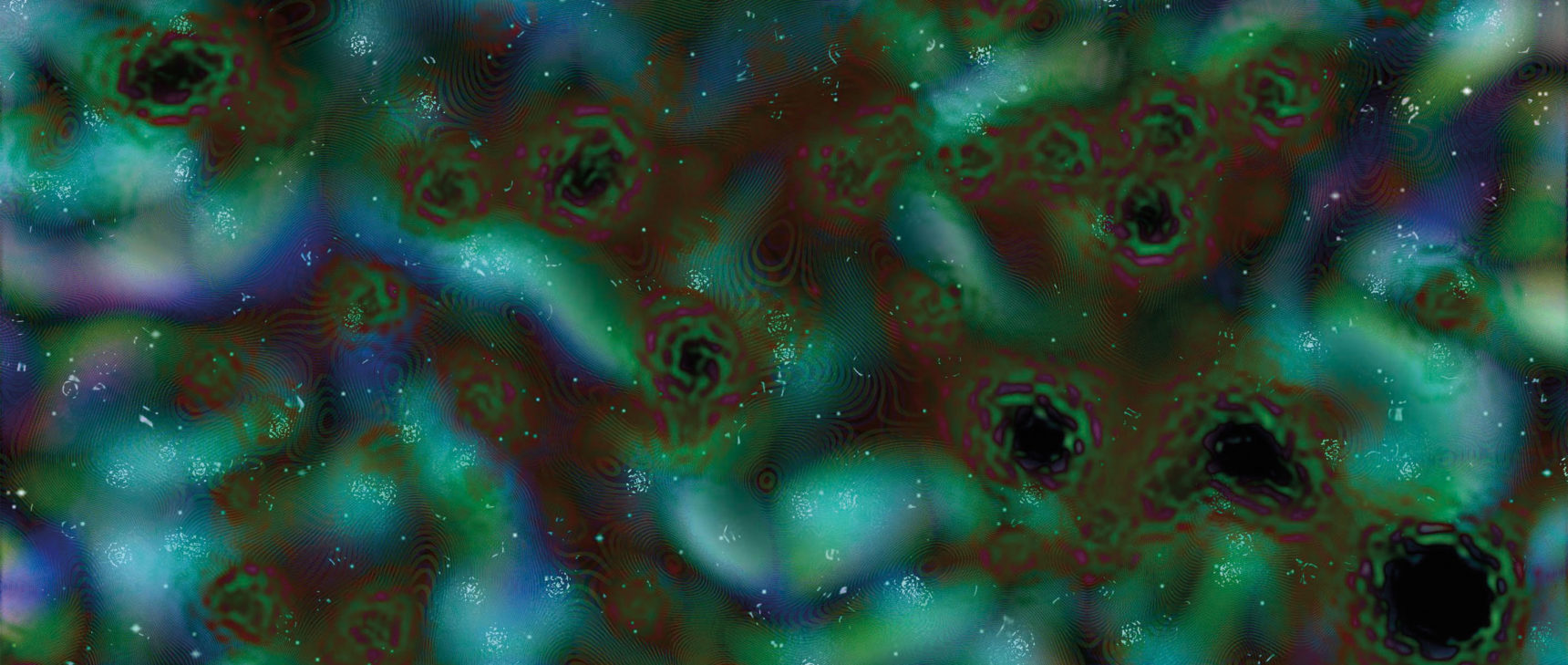
From the Edge of the Universe to the Inside of a Proton
Ron Miller, The Zoomable Universe
The sumptuous new coffee table book The Zoomable Universe: An Epic Tour Through Cosmic Scale, From Almost Everything to Nearly Nothing, written by Caleb Scharf and illustrated by Ron Miller and 5W Infographics, arrives at a special time in human history when we are experiencing rapid scientific discovery, but also at a cosmically special time when the universe itself is as accessible as it ever has been or will be to science.
The book revisits the stepwise journey through nature’s scales that has long served as a hook in scientific exposition — it was notably employed in Robert Hooke’s 1665 best-seller Micrographia and in the acclaimed 1977 short film Powers of Ten. But science keeps progressing, and our picture of the Russian-doll cosmos has sharpened dramatically in the past four decades. “What we wanted to do is update the material,” Scharf, an astrobiologist and planetary scientist at Columbia University, told Quanta. Referring to Powers of Ten as an inspiration, he added that “doing it in a printed book slows things down, in a good way.”
Packed with bleeding-edge facts, vivid prose and gorgeous illustrations, the book takes readers from a wide-angle view of the observable universe at 1,000,000,000,000,000,000,000,000,000 meters across to a subatomic picture of space in 0.00000000000000000000000000000000001-meter increments. Along the way, we see some scales filled with stuff, others that appear empty, and still others where the universe looks strikingly similar across huge differences in scale. “Little bits of it look like the big bits,” Miller said.
But we should count ourselves lucky; there have not always been 62 orders of magnitude of universe to explore, and there won’t always be. As Scharf explained, “If you turn the clock back far enough to the Big Bang, obviously there was a time when the number of scales that were causally connected were fewer, and space itself was smaller.” Likewise, “if you extrapolate 100 billion years into the future, assuming the current accelerating expansion, it will be essentially impossible for us to see anything much beyond our galaxy or our local group of galaxies.” Scharf said this seems to mean we’re living at a special time. And he wondered, “Would someone in the future be able to figure out how the universe works?”
Selected illustrations and lightly edited excerpts from The Zoomable Universe follow.

At roughly 1027 meters across, the observable universe is both foamy and granular. A bit like the soapy scum left from an emptying sink or bath, the foam is seen in outline, traced by a three-dimensional web of dark as well as luminous matter. Peppering that web are dense condensations where gravity has overwhelmed the expansion of space-time. Here and there are superclusters of galaxies a trillion trillion meters across. Within these superclusters are distinct clusters of galaxies, broad and deep wells of gravity that hold swarms of hundreds, sometimes thousands, of galaxies, all orbiting in and out of the center, together with vast pools of hot gas and cold dark matter.
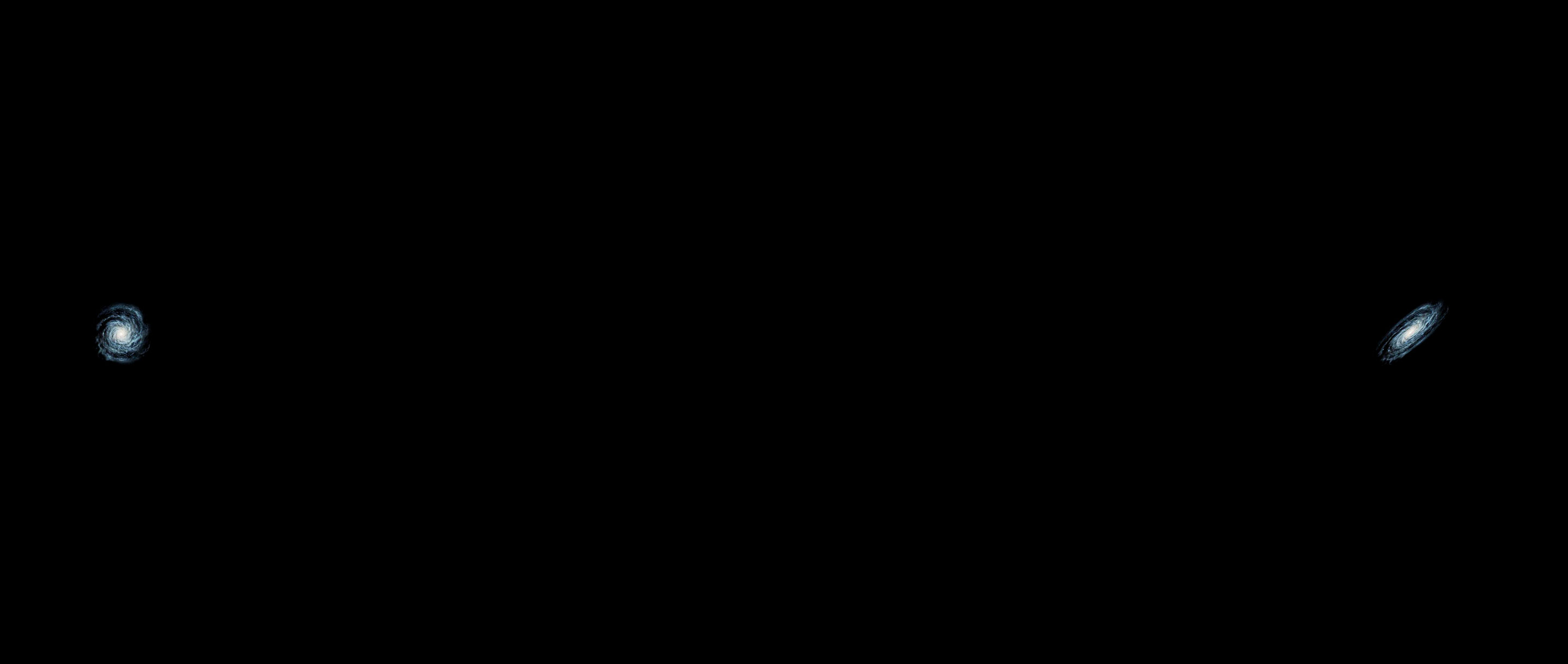
Compared to the scarcity of stars within galaxies, the typical separation between galaxies themselves is a little less isolating. For example, from the center of our Milky Way (far left) to the center of Andromeda (shown to scale), there is a relatively modest gulf of about 2.5 × 1022 meters.

In the first hundred million years after the Big Bang, it seems that a starter generation of very large stars and the beginnings of galactic structures were forming. These early stars were critical for generating the universe’s first heavy elements, and for dumping them back out into interstellar space as the stars aged, inflated, and exploded.
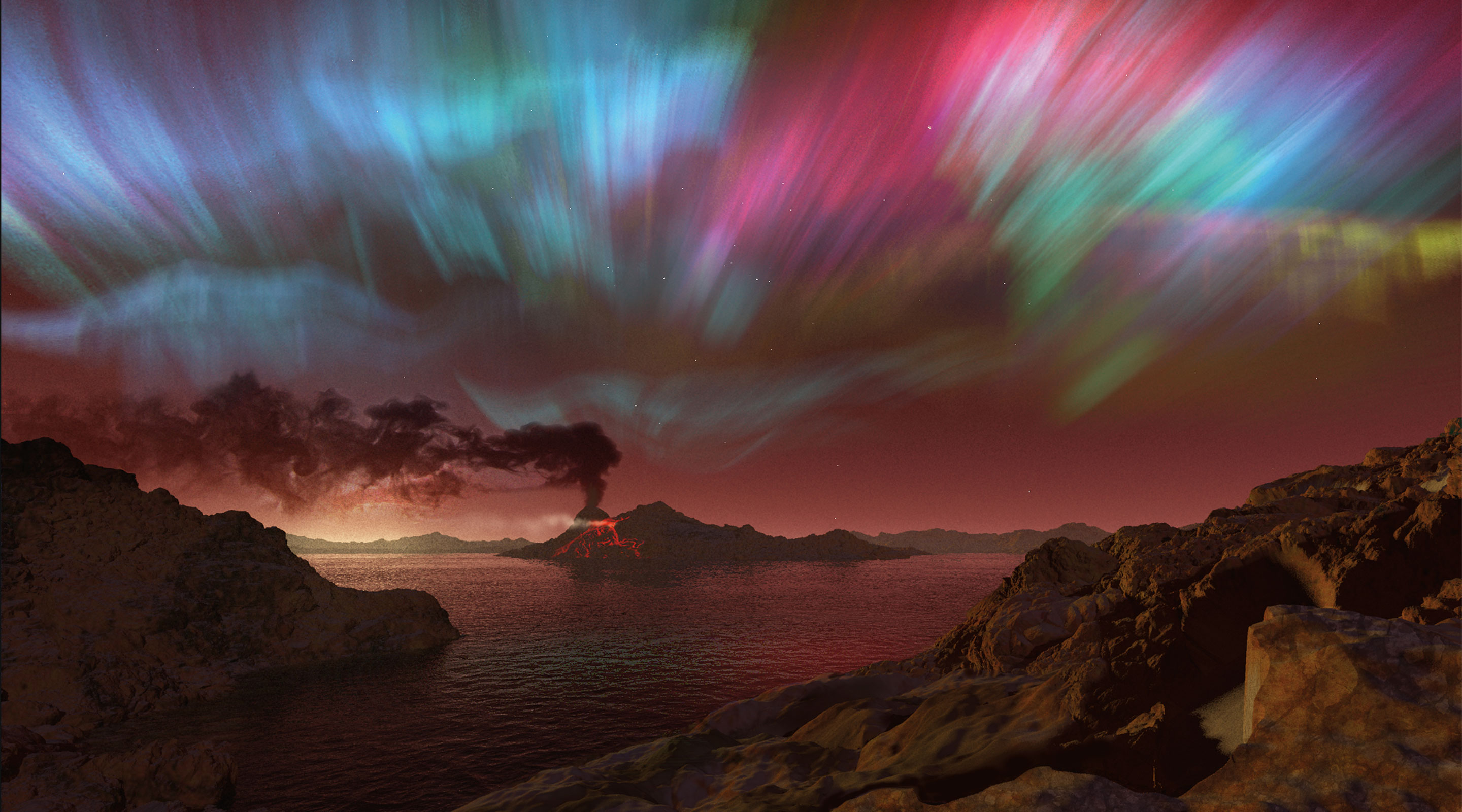
Next to living things, planets may be the most diverse and complex objects in the universe. Proxima Centauri b, the closest known exoplanet, may have skies filled with auroras caused by its flaring red-dwarf sun.
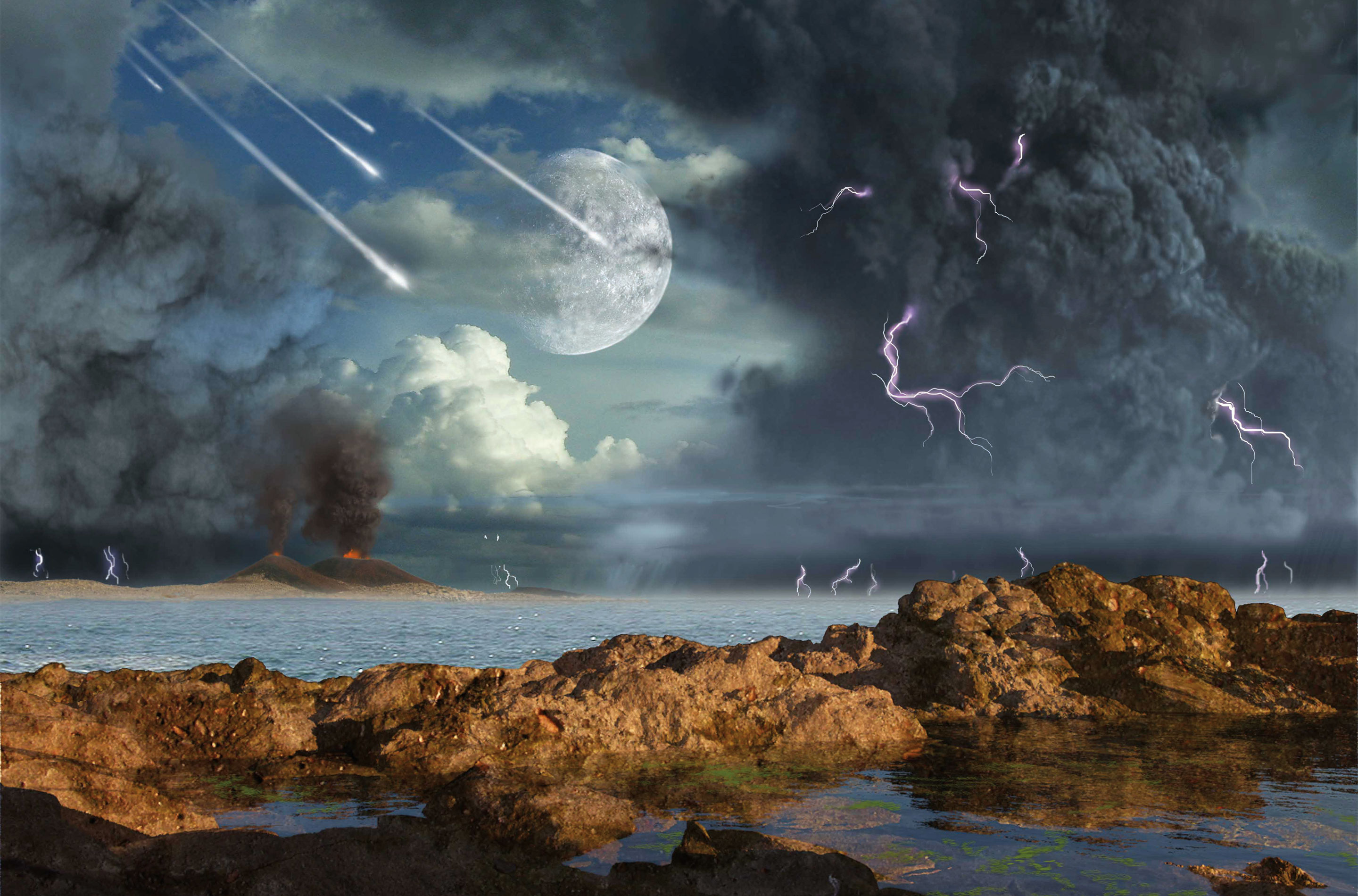
Earth, pictured here at the start of the Archean eon, 4 billion years ago, is a powerful thermodynamic, chemical and radiological machine. Multitudes of phenomena are knit into the planetary surface and interior, as well as woven through time. Properties that we take for granted, from climate to fossil fuels, are the consequence of deep cycles and serendipitous events scattered across billions of years.
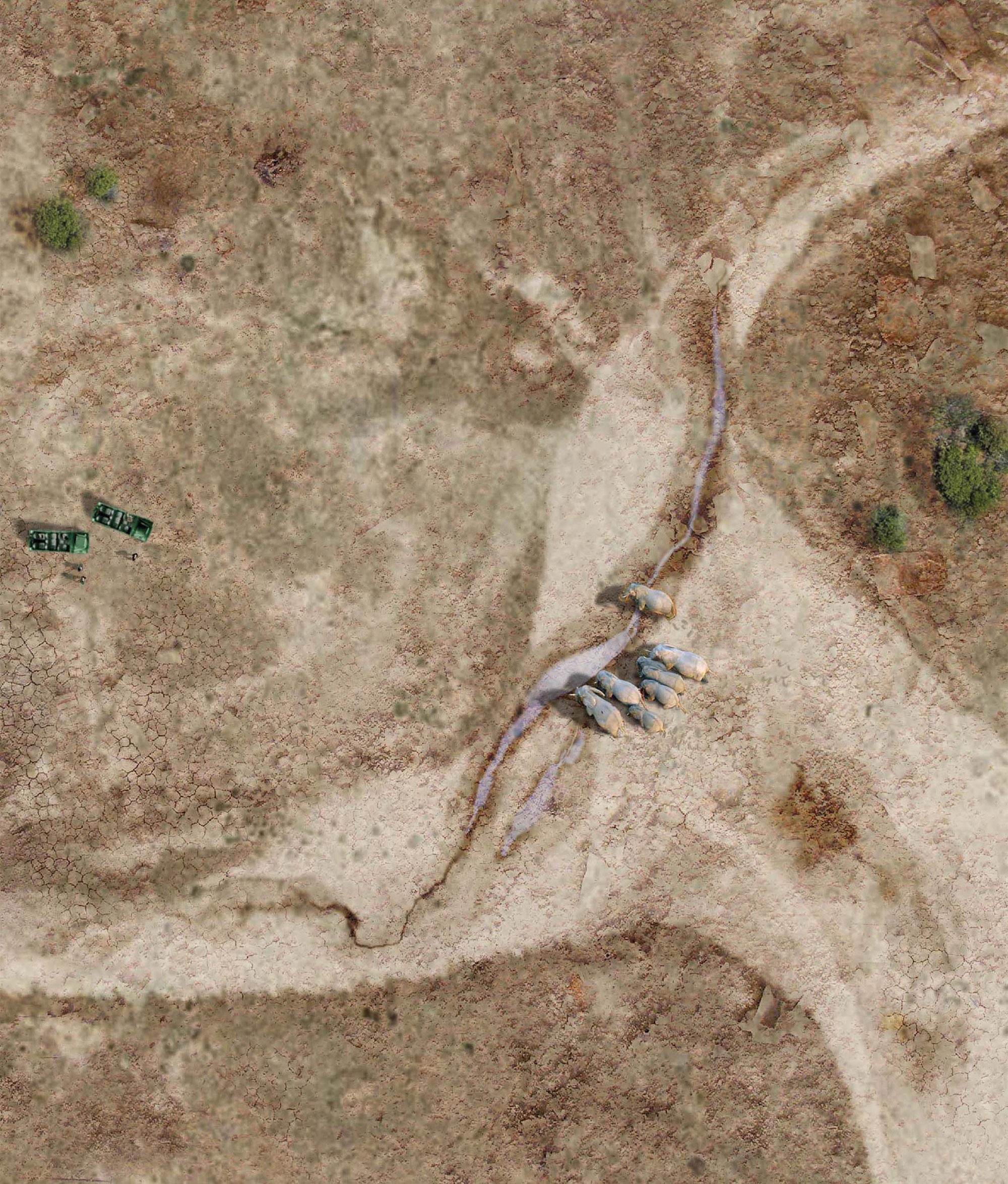

In Kenya, our journey through the scales of nature can bring us in just a couple of zooms from the hard vacuum of space to hover above a herd of elephants. They’re inspecting, and being inspected by, a small herd of nervous humans in their metal jeeps. A few more twists of the telephoto lens bring us in on an individual pachyderm. And on an oxpecker bird sitting on that elephant and prying loose a juicy louse from folds of tough skin.
The parasitic louse in the bird’s beak is part of a group of wingless insects that evolved 480 million years ago. In that sense the louse is a more alien organism than the bird and elephant, and also more successful, despite its present predicament.
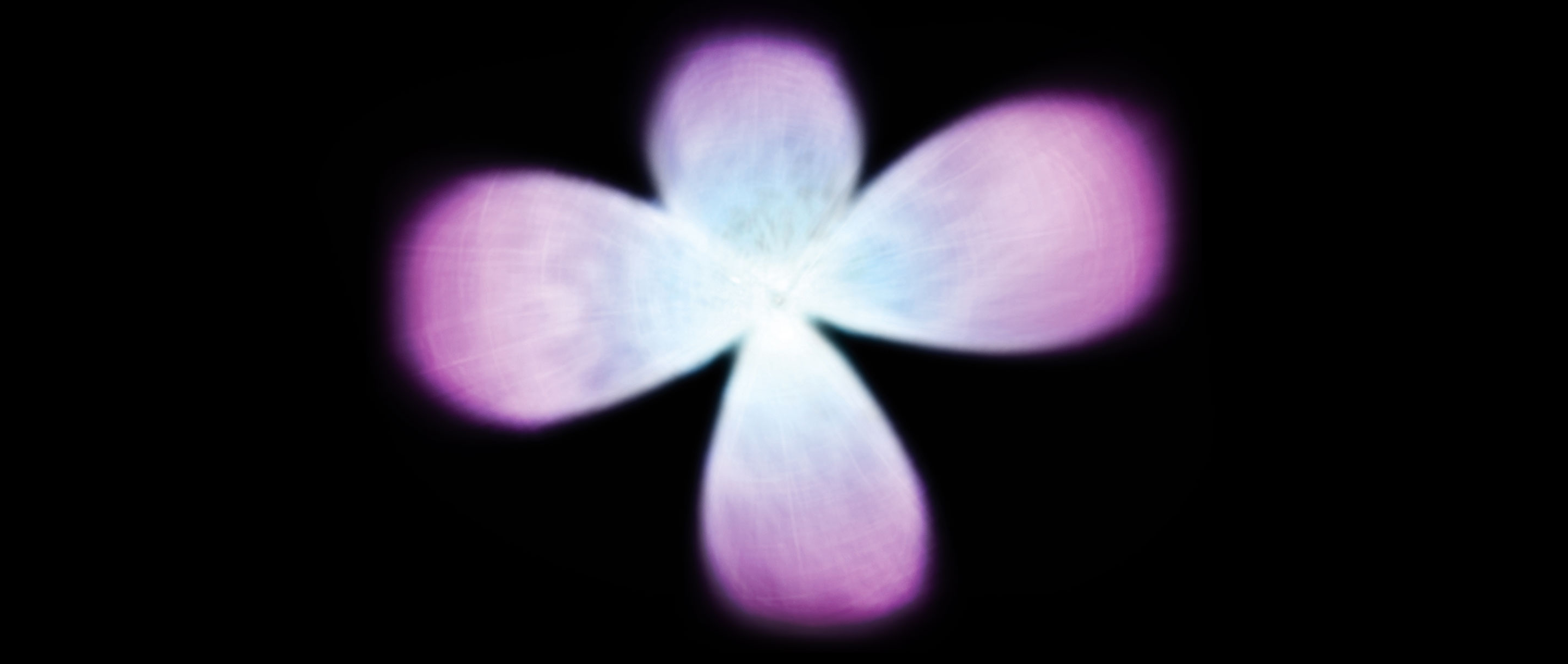
Life, as we currently know it, is built around the element carbon. Carbon atoms are like your favorite pieces in a Lego set — the pieces that always let you complete your most ambitious projects. Carbon atoms harbor six electrons, four of which can easily be attracted to the nuclei of other atoms and share space with those atoms’ electrons. In quantum-speak, these electrons occupy zones of spatial probability around a carbon atom that let the atom associate with other atoms — or, in other words, form chemical bonds.

A typical atomic nucleus takes up one-trillionth of its atom’s volume but holds 99.9 percent of the mass. All that emptiness means that the universe from a scale of 10–11 meters down to 10–15 meters is phenomenally dull.
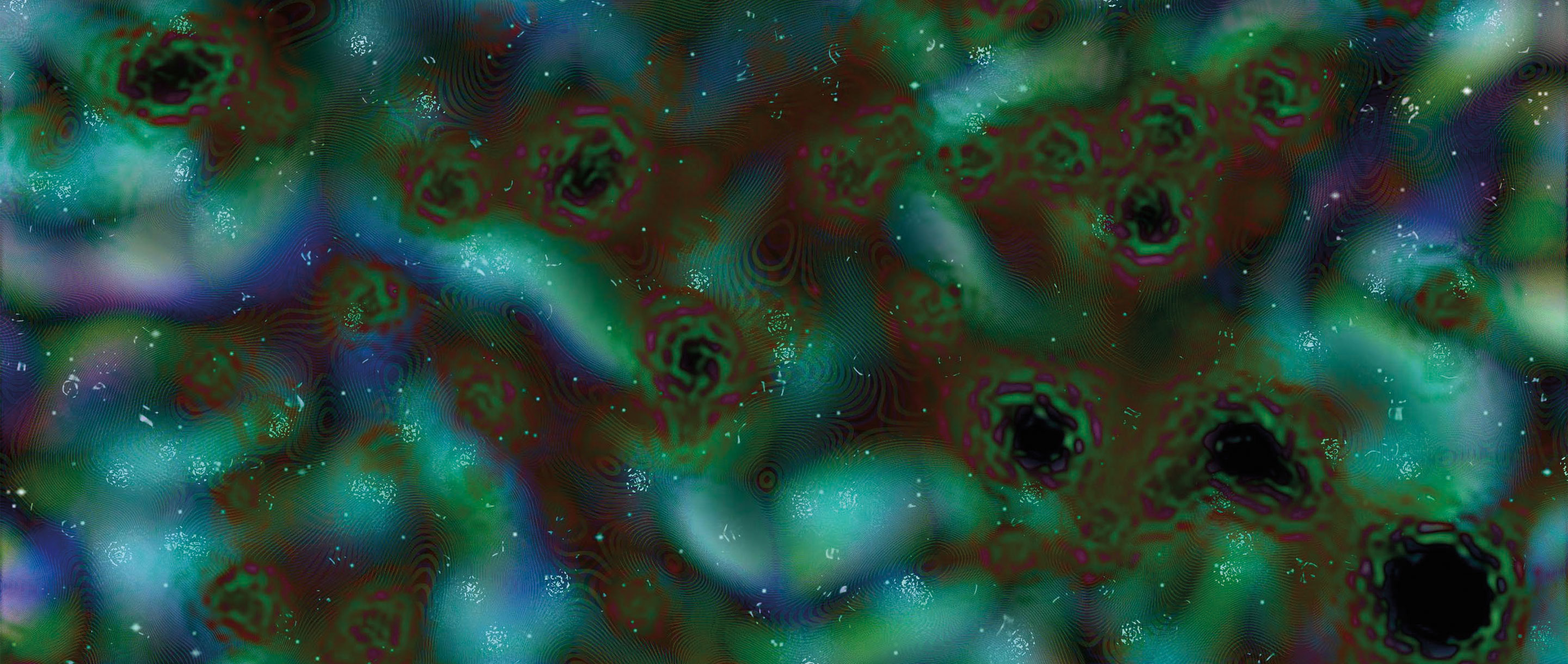
The innards of a proton are far more messy and inelegant than we might have expected. Although this composite object is experienced by the outside world as if it simply contains two up quarks and one down quark, that is only part of the story. Below the scale of a proton, it makes sense to modify our earlier ideas about a reality composed of “particles” and “waves.” Instead, we’re better served by thinking about what we’ll call “fields” and “quanta.” Ripples on a pond are one analogy.
Excerpted from THE ZOOMABLE UNIVERSE by Caleb Scharf, with illustrations by Ron Miller and 5W Infographics. Published in October 2017 by Scientific American / Farrar, Straus and Giroux, LLC.Text copyright © 2017 by Caleb Scharf; illustrations copyright © 2017 by Ron Miller; infographics copyright © 2017 by 5W Infographics. All rights reserved.



